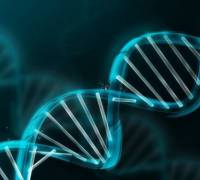| Main » Articles » Health |
 Carbohydrates, proteins and fats form the three main macronutrients that are essential in every balanced diet. While proteins and fats may be responsible for bodily functions such as the creation of body tissues and insulation, carbohydrates provide calories that are necessary for the production of energy. In fact, carbs provide more than 60 percent of the amount of energy required by the body. The energy is mostly used for normal body functions such as heartbeat, digestion, breathing and body movement. Carbohydrates can be classified according to their chemical structures, and under such classification, they are divided into simple carbohydrates and complex carbohydrates. Simple CarbohydratesSimple carbohydrates are simple sugars with a chemical structure that is composed of one or two sugars. They are refined sugars that have very little nutritional value to the body, and therefore, it's advisable that their consumption be limited to small quantities. In comparison to complex carbohydrates, simple carbohydrates are digested by the body more quickly, because they have a very simple chemical structure. There are two types of simple carbohydrates: monosaccharides and disaccharides. Monosaccharides consist of only one sugar, and examples include fructose, galactose and glucose. Disaccharides consist of two chemically-linked monosaccharides, and they come in the form of lactose, maltose and sucrose. Foods that contain simple carbohydrates include table sugar, products with white flour, honey, milk, yoghurt, candy, chocolate, fruit, fruit juice, cake, jam, biscuits, molasses, soda and packaged cereals. Despite the fact that simple carbohydrates do not contain enough essential nutrients, some foodstuffs such as fruits may still be good for you. Complex CarbohydratesComplex carbohydrates consist of a chemical structure that is made up of three or more sugars, which are usually linked together to form a chain. These sugars are mostly rich in fiber, vitamins and minerals. Due to their complexity, they take a little longer to digest, and they don't raise the sugar levels in the blood as quickly as simple carbohydrates. Complex carbohydrates act as the body's fuel, and they contribute significantly to energy production. Similar to simple carbohydrates, complex carbohydrates are divided into two categories: oligosaccharides and polysaccharides. Oligosaccharides consist of a small number of monosaccharides, which does not exceed 10. They are important in the absorption of certain minerals and the formation of fatty acids. Polysaccharides are often made up of a large number of monosaccharides and disaccharides. Examples of polysaccharides include cellulose, dextrin, glycogen and starch. Complex carbohydrates are commonly found in vegetables, whole-meal bread and cereals. Examples of foods that contain complex carbohydrates include spinach, yams, broccoli, beans, zucchini, lentils, skimmed milk, whole grains and many other leguminous plants and vegetables. Complex carbohydrates have a higher nutritional value than simple carbohydrates. It may be confusing to differentiate simple and complex carbohydrates due to the fact that complex ones contain certain elements of simple ones. Nevertheless, differentiating the two should not be a problem since their chemical structures are very different, and therefore, they can be distinguished by their nutritional properties. The consumption of simple carbohydrates is not recommended, especially for diabetics. | |
| Views: 467 | Tags: | Rating: 0.0/0 |
| Total comments: 0 | |




